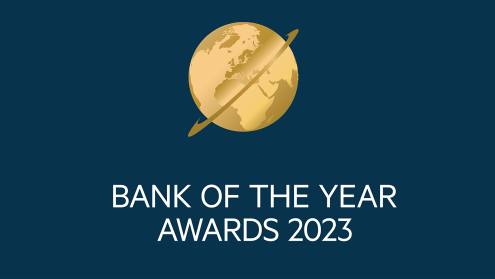Swift and Chainlink have created a credible proof of concept with the power to scale tokenisation, according to Tom Zschach, chief innovation officer at Swift, and Sergey Nazarov, co-founder of Chainlink.
The results of the new experiments show that financial institutions can build on existing back-end systems — minimising the level of investment needed — to transact across public and private blockchains, and leverage the Swift global messaging network.
The proof of concept had collaboration from more than a dozen major financial institutions including Australia and New Zealand Banking Group (ANZ), Depository Trust & Clearing Corporation, and Lloyds Banking Group. It successfully demonstrated the transfer of tokenised assets in multiple cases.
Transfers were completed between two wallets on a single distributed ledger technology (DLT) network (Ethereum), between two wallets on different DLT networks (Ethereum and Avalanche), and from a public DLT network to a private network (Ethereum and Quorum).
“While we do remain ‘agnostic’, in this case the experiments demonstrated that Swift, in combination with Chainlink’s [cross-chain interoperability protocol (CCIP)], can achieve interoperability between traditional finance and existing payment rails and emerging blockchain networks,” says Mr Zschach.
Our goal is to take this work and turn it into a production system that eventually thousands of banks will use
The next step is to move from proof of concept into the real world. Mr Nazarov is convinced the experiments reveal a potential to scale. “We're looking to take our work with Swift and turn it into something that is usable, on production and for real value. Our goal is to take this work and turn it into a production system that eventually thousands of banks will use,” he says.
Tokenisation, the process of creating and then trading a digital representation of an asset on a blockchain — whether real estate, a bond, artwork or even a carbon credit — is widely viewed as having the potential to revolutionise asset management. Market sentiment is strong. Benefits include operational cost savings and fractional ownership, alongside enhanced compliance, auditability and transparency. Analysts believe it could reduce total costs by up to €6bn, or 24% in equity trading alone, by 2030.
However, since 2017’s first digital token, and initial industry excitement, wider adoption has, so far, not materialised. In fact, a recent McKinsey report suggests that renewed excitement around tokenisation could indeed feel like “deja vu”.
Solving the tokenisation puzzle
Keith Bear, fellow of the Cambridge Centre for Alternative Finance, attests to the benefits of tokenisation, but still sees an industry in search of a path forward. “There’s a high degree of certainty on the value of tokenisation, but a high degree of uncertainty in terms of how it can meaningfully progress,” he says.
As a result, there are a number of different projects all approaching the challenge — which Mr Bear likens to a Rubik’s Cube — in different ways. Mr Bear lists the Quant Network’s Overledger project, which is collaborating with the Bank of England and the Bank for International Settlements, and projects within the Linux foundation’s Hyperledger family, such as the Ripple/NTT Data collaboration on Inter Ledger Protocol and Quilt as examples.
On the latest Swift and Chainlink effort, he says: “Swift has the benefit, obviously, of thousands of bank members, and their messaging system being deployed across the vast majority of the financial services network and a single point of entry.”
And it’s this leveraging of Swift’s existing, trusted, familiar messaging standard that was key to ANZ’s enthusiasm to join these latest experiments. “We’d been speaking to Swift; our view was that they were sitting on this incredibly valuable network of thousands of banks, so we looked to Swift to say, well, you’re the biggest financial messaging network on the planet — what are you doing in this space?” recounts Nigel Dobson, banking services portfolio lead at ANZ.
Mr Dobson was pleasantly surprised by Swift’s outlook in terms of its ambition to leverage existing infrastructure, working with Chainlink and using the CCIP to access public networks and perform cross-chain transactions. And he is even more pleased with the results.
“We were hoping to see information and value travelling simultaneously as opposed to information and value travelling sequentially — which is what happens now in Swift messaging. What we saw was by using the CCIP, it enabled both instructions and value to move simultaneously and cross-chain. That was a revelation,” he says.
“The confirmation that it can be done kind of widened our eyes in terms of possibilities,” he continues. ANZ is keen to learn more about what can be done with the CCIP. “Now we want to do live, real-value transactions: cross-border, cross-chain, multi-asset type transactions. Or at least prove we can.”
One example that ANZ is looking at is the potential to supercharge superannuation in Australia. “We’ve estimated that it can take up to 15 days to reconcile, invest and pay in these complex payment processes, so having the information travel alongside the value, and give the value context, and allowing the recipient to act on it quickly is really one of the benefits.” Mr Dobson believes that the investment cycle has the potential to be compressed from 15 days to a matter of hours.
“You don’t need to be too skilled an actuary to realise the significant benefits in what you can earn,” he says.
He also points to the as-yet unrealised potential of nature-based assets, in his view a high-growth asset class badly in need of modernisation. Right now ANZ is specifically exploring tokenisation in the Reef Credit Scheme, a project that rewards farmers with credits for transitioning away from agricultural practices that harm the Great Barrier Reef to those that work to improve the quality of water entering the reef.
Testing regulation
However, to realise these benefits, regulation needs to be crystal clear. All participants in the Swift and Chainlink experiments cited legal and regulatory clarity as the largest pending hurdle for widespread adoption.
The experiment’s full report concedes that since legislative and regulatory decisions are outside Swift’s, Chainlink’s and experiment participants’ control, discussion was instead focused on the topics within their control. Mr Zschach takes a sanguine view. “We can only manage what we know today, and we’ll make assumptions on the clarity that’s provided — or not — and then work with our customers to figure out how to extract value.”
Mr Bear points to a number of sandboxes working in collaboration with the relevant regulators. “I think the sandbox is a great opportunity for new initiatives to come in and work in a safe environment in terms of regulatory complexity. This way there’ll be some degree of certainty that when they exit the sandbox, regulatory and legal clarity will have been resolved as a result of collaboration with the regulator,” he says.
He singles out the UK Treasury’s Digital Securities Sandbox consultation, and the launch of the EU’s DLT Pilot Regime: “I think that’s particularly interesting on a local domestic perspective, but it also has an implication globally because it’s all very well having these transformations and individual jurisdictions like the UK or the EU, but obviously from the financial markets point of view, as illustrated by Swift, it’s all about the international markets.
“So there’s also a key question in terms of how that will work, effectively. There’s a need to have a degree of cross-jurisdictional collaboration to make this truly successful,” he continues.
Small steps
Mr Nazarov believes we will see incremental progress evolving according to geography. In the next couple of years he expects to see an increase in transactions between public chains. Then he predicts that bank chains will be doing transactions with banks in the same region. Then we will start to see transactions across regions.
“Everyone in each respective region will get comfortable with the process and compliance aspects and the settlement. And there’ll be more demand, and eventually, a European bank will want to buy a bond in Asia, and Asian banks will want to buy a carbon credit in Europe. So that’ll be the next stage of bank adoption and connectivity. At the final stage, you'll have banks actively doing transactions with each other globally, across regions,” he says.
The real goal of all this, he says, is that the public chains and the bank chains interact with each other using the CCIP to form a kind of blockchain-based global financial system.
While such a giant leap remains a fair way off, small steps in the form of pilots, sandboxes and proofs of concept will continue to gather momentum, with financial institutions adopting incremental change as the most compelling use cases become apparent.
Mr Zschach has his eyes firmly on the future: “We’re not just solving a problem that we’ve already solved today or doing something that we already do today with new technology — there could be a fundamentally different way of doing things, and I think that motivates a lot of people.”







